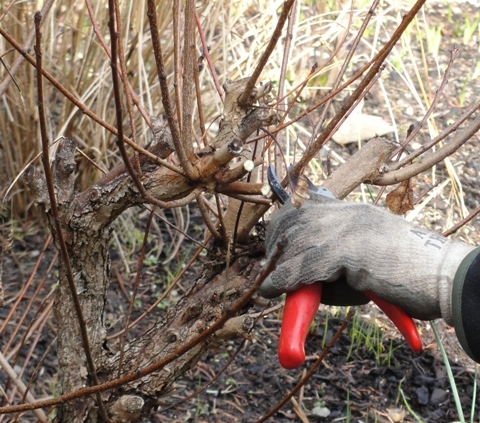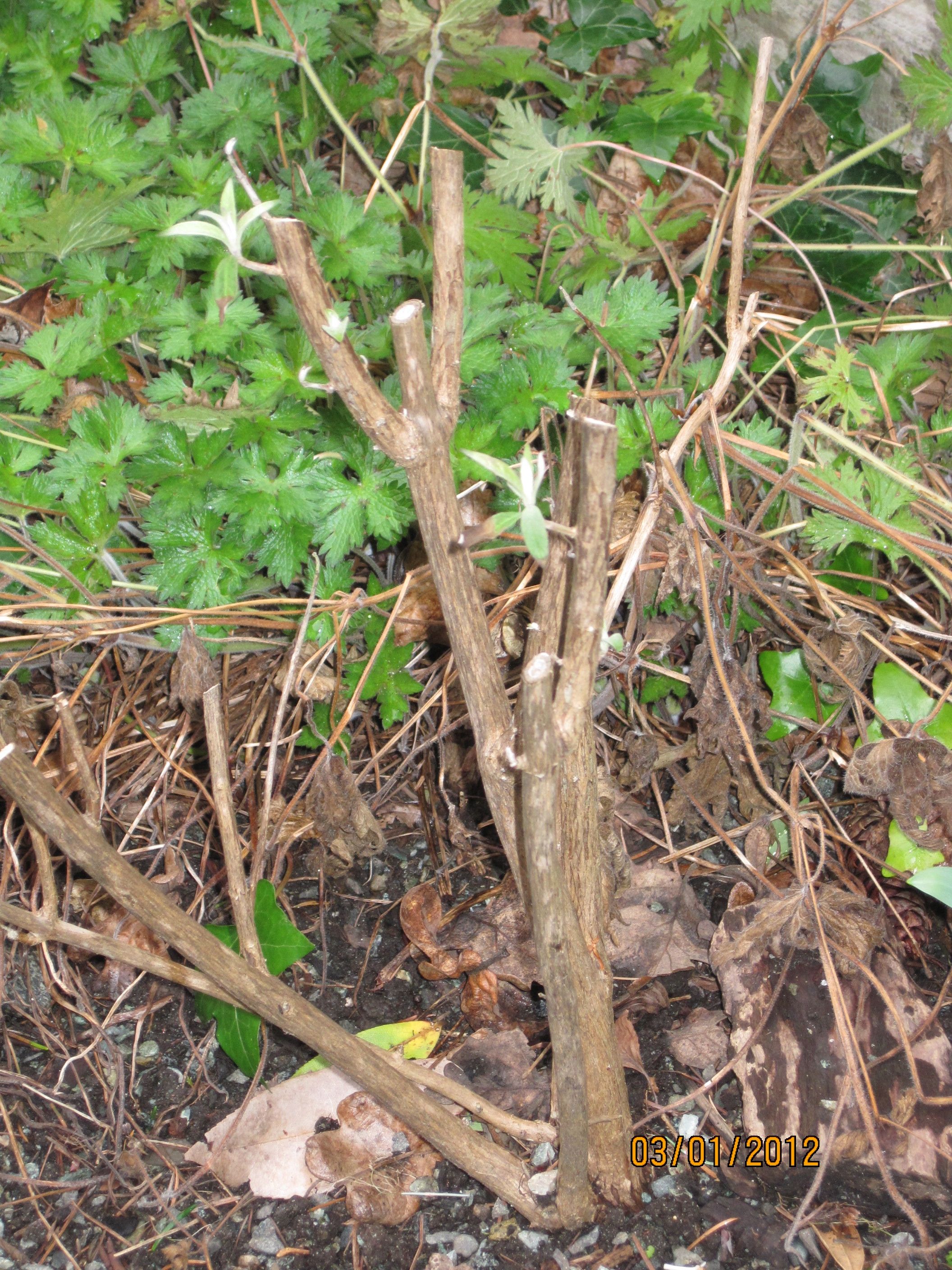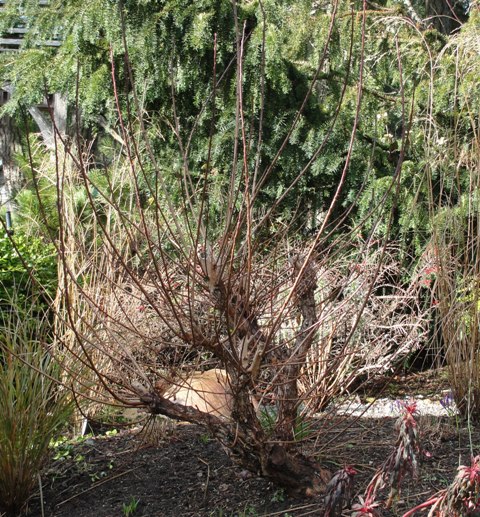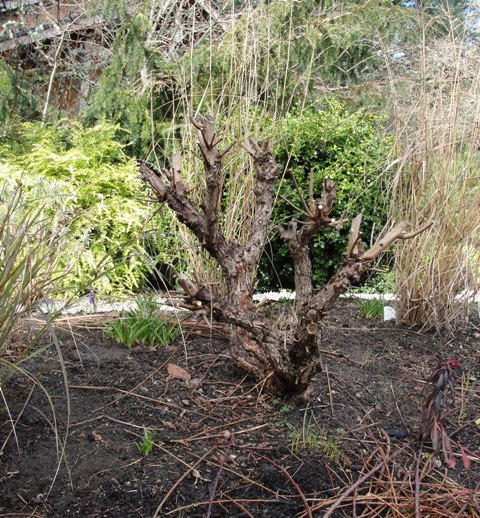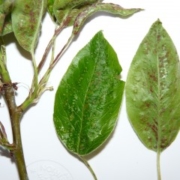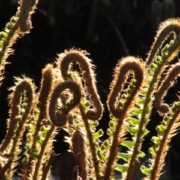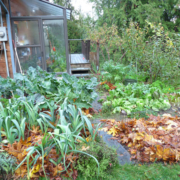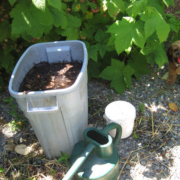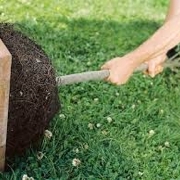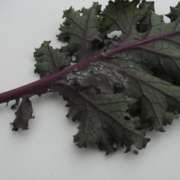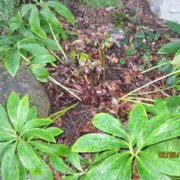Spring Haircuts For Shrubs: Pruning To Avoid ‘Bad Hair Days’
I look back with horror on how I used to prune my shrubs. Akin to a “bowl cut” for hair, basically I just trimmed off the ends of branches to keep shrubs the size and shape I wanted, resulting in a “witches broom”, a scary hairstyle indeed. Alternatively, I didn’t prune at all, favouring the wild and wooly look. It’s embarrassing to think of the Buddleia that I had to support with a complicated rigging of stakes and twine. Then I took a 4-session pruning class with Patty Brown, at the Horticulture Center, and my gardening life changed. Always ask yourself ‘Why do I want to prune this plant?’ Here are three of the main reasons. Training—To direct the growth in a direction that you choose. Cut to a bud which faces in the direction you want the branch to go. Maintenance —To enhance the health of the plant. Removing dead, diseased, or damaged wood (the famous DDD); removing branches that cross, rub, or otherwise impinge on the space of their fellow limbs; increase air circulation. Rejuvenation—This is often drastic and requires experience. Don’t attempt to do this all in one year; the process may take several years, with some rejuvenation pruning done each year on an old, decrepit and suffering plant. Sometimes better to buy a new one.
To prevent loss of the current year’s bloom, follow the adage “If it blooms before June, you don’t have to prune.” Well, you do have to prune, but not now. Wait until after flowering to prune your spring bloomers. We learned that there are only two main types of pruning; heading back, and thinning. That witches broom I mentioned is from heading back incorrectly.
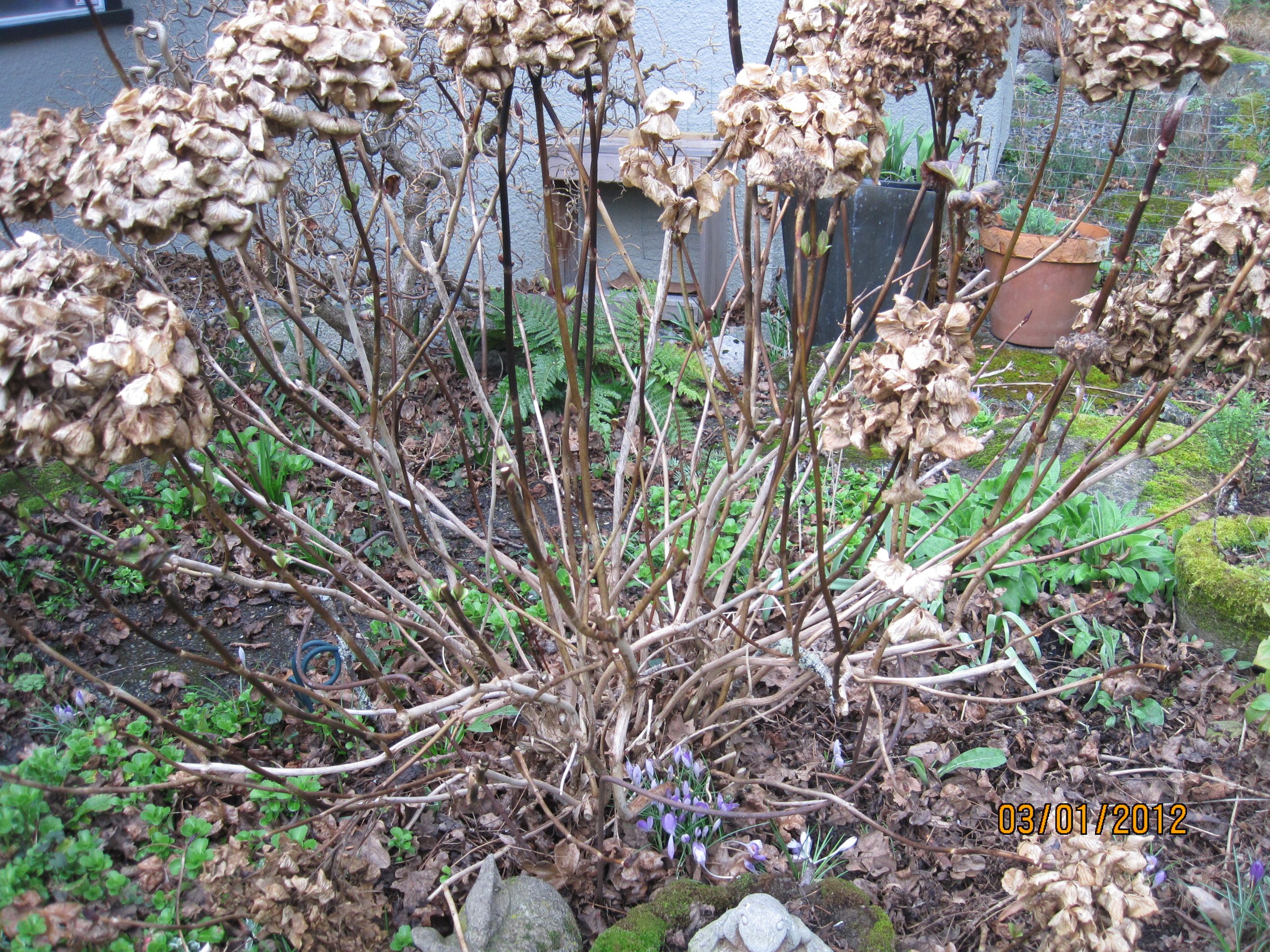
This hydrangea will be both headed back, (cut to a fat bud on the bare stem) and thinned as well (by cutting out one quarter of the oldest branches to the ground).
Heading back is to shorten branches, direct growth, or maintain size, but is also used to keep some shrubs tidy and full, as in shearing hedges or small-leafed evergreens such as boxwood, heather, etc. Remember that at any cut point, new growth will erupt, so you must decide whether you want a burst of new green, or just a more controlled response. I have a Rose Glow Berberis right beside a pathway, and if you’ve ever crossed swords with one of these, you’ll understand the value of heading back in a responsible way, to keep it within bounds but not encourage rampant re-growth. I always shorten the branches by cutting to a smaller side branch that is aimed away from the path.
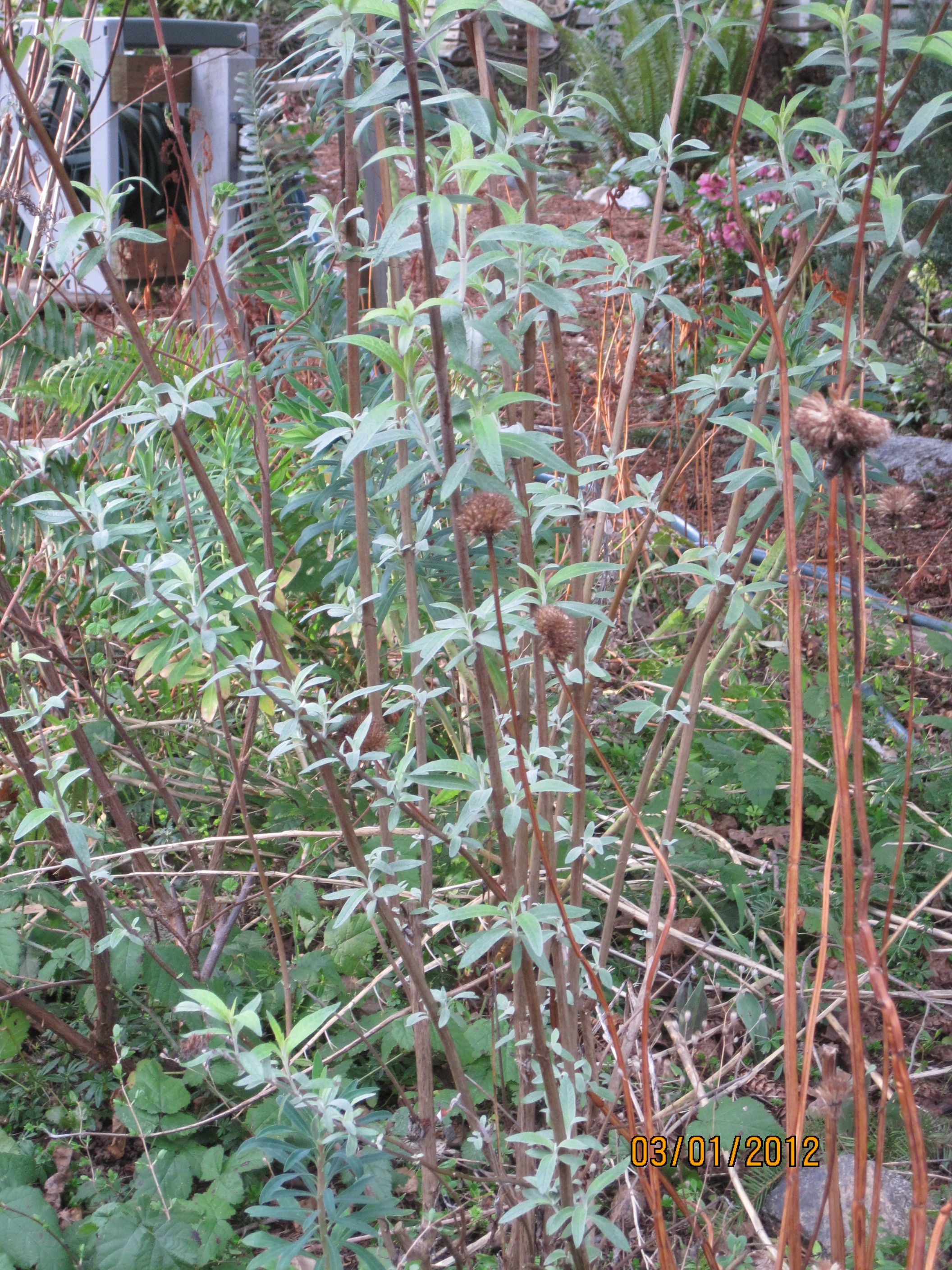
Think of how much energy this Buddleia has wasted putting on these leaves. The pruning should have been done a few weeks ago.
The very popular red-twigged dogwood, Cornus stolonifera, is another candidate for coppicing, as the new growth is always much redder and more vibrant. A newly coppiced Cornus will sprout new red growth quickly and make a much more stunning specimen in the following winter.
Broadleaf evergreens can also be pruned now unless flowering is an issue. This is usually done by heading back, ie. as in maintaining a hedge, or with thinning cuts to eliminate crowding. The burst of new spring growth will cover up any stumps or stubs. Pruning at this time of year gives us the gardening fix that we so need, and only ‘good hair days’ for our shrubs.
